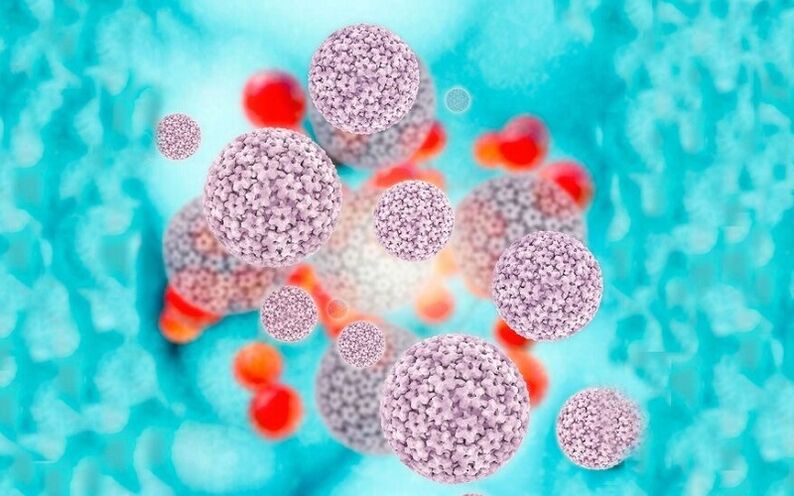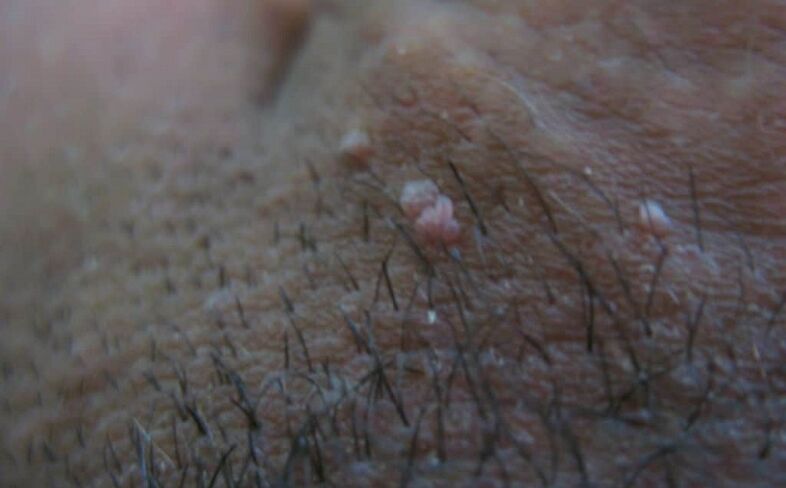Papillomas of the labia are a rather delicate problem that causes dissatisfaction with oneself and reduces the quality of sex life. They are difficult to hide, they can cause discomfort during intercourse, so papillomas need to be removed. In addition, in some cases, growth on the female genitals can pose a dangerous risk of developing cancer.
Causes of papillomas
Papillomas of the labia or genital warts are a consequence of human papillomavirus infection. In total, there are more than 100 strains of this virus that differ in the type of tumor and the risk of developing oncology.
The virus enters the body mainly through sexual contact against the background of a decrease in immunity. However, a man who has infected a woman may not have visible signs of the presence of the virus because male papillomas do not always appear on the skin.
Decreased immunity occurs in the background of recently transmitted infectious diseases, vitamin deficiency, or chronic stress. Papillomas of the labia may be caused by a decrease in local immunity due to various inflammatory and infectious diseases of the genitals, including thrush and bacterial vaginosis. However, for infection, it is sufficient to use the personal hygiene products of others to show aesthetic growths on the labia over time.
Thus, despite the fact that the virus is transmitted from one person to another, the appearance of papillomas in the labia of women is as follows:
- decreased immunity after ARVI, pneumonia, influenza, or tonsillitis;
- vaginal infections;
- non-compliance with personal hygiene;
- tension;
- unbalanced diet;
- the presence of a chronic focus of infection in the body;
- fake sex.
All of these factors lead to a decrease in general and local immunity. As a result, the body will be sensitive to various negative effects and will not be able to resist the human papillomavirus.
The virus often does not manifest, it is restrained by human immunity. This is only true if the person is completely healthy. The virus can then be asymptomatic in the body for a long time. The development of papillomas occurs in the background of a decrease in immunity. If this does not happen in the coming years, the body will be able to cope with the virus on its own, however, self-healing will usually take at least 18 months.

What are papillomas like on the genitals?
How the infection manifests in a woman's labia depends on a number of factors:
- the type of virus;
- the concentration of the virus in the body;
- localization of growth.
The development of papillomas in the labia is caused by the oncogenic or conditionally oncogenic strains of the virus (16, 18, 31, 32, 45 and other types). It is easy to understand what such papillomas look like on the labia, knowing what a condyloma is. These are tiny papillae with jagged edges that rise above the surface of the mucosa. They are usually not different in color or slightly lighter than the mucous membranes. Manifestations of the papilloma virus on the labia that provoke the development of genital warts can spread to a woman’s perineum, vulva, and vagina.
Condyloma is always formed only on the mucous membranes. Papillomas do not appear on the inner labia of women, they only form in areas with thin epidermis.
Papillomas are small balls on the feet that rise above the skin. They may have smooth edges, be properly shaped, be slightly lighter, or darker than the rest of the skin. When pressed, the papillomas of the labia do not hurt, it feels a homogeneous structure of growth under the fingers. This type of tumor appears in the folds of the groin and on the labia majora.
Almost any of the known methods are used to remove papillomas of the labia, as the risk of burns or deep damage to the epidermis is minimal. Papillomas are treated comprehensively on the labia, as such growths are potentially dangerous.
Warts can develop in the following areas:
- small labia;
- labia;
- vagina;
- Cervix;
- anal opening;
- groin;
- urethra.
A papilloma photo on the labia is no different from images seen on other parts of the body, while papillomas or condylomas in the vagina and vagina are difficult to spot on their own.
The development of papilloma on the labia during pregnancy is associated with a decrease in immunity. In this case, timely treatment of the consequences of HPV plays an important role, otherwise there is a risk of the child becoming infected during passage through the birth canal.

Why are papillomas dangerous?
Sexual intercourse and the human papillomavirus on the labia of women are directly related. First, there is a risk of transmitting the virus to the sexual partner when in contact with the affected mucosa. Second, friction during intercourse can damage papillomas and warts, which is painful. There is a risk of infection with papilloma as it becomes inflamed and can begin to progress to cancer.
There are cases where a woman has a huge papilloma on the big lips due to repeated injuries. No woman is insured against such a risk. Large growth is very dangerous and must be removed first.
Papilloma on the mucous membranes of the labia and in the vagina can lead to the development of cervical cancer. This is due to papillomavirus activity, which is manifested by excessive division of epithelial cells in the labia and other parts of the mucosa. In this case, the damage to the cells of the cervix develops in several stages. First, erosion develops in the labia of the labia and then turns into dysplasia, a precancerous condition. Lack of timely treatment for dysplasia leads to the development of cervical cancer.
It should be understood that any papilloma on the mucous membranes of the labia is a potential hazard. The papilloma itself can progress to a tumor and not just provoke cervical oncology. Signs of malignant papilloma include an increase in growth size, pain and itching, an unpleasant-smelling discharge from the growth, and blackening of the skin in the affected area. If you notice any of these symptoms, you should see a doctor as soon as possible - an oncologist, gynecologist or dermatovenerologist.
Treatment and removal of papillomas
How to treat papillomas on the labia depends on their number and size. We recommend that you do not self-medicate, but consult a doctor who will tell you in detail what to do to remove and prevent papillomas on the labia.
To get rid of papillomas on the labia, you need to be consistent. The virus is first suppressed, then the growth is removed and immunostimulatory therapy is given if necessary. To determine the exact order of treatment, a PCR analysis should be performed that shows the extent of virus activity and concentration and also allows the strain to be determined.
If a woman is found to have a potentially dangerous strain of the virus, 16 or 18, complex therapy is needed. In this case, all removed papillomas are sent for histological analysis and a complete examination of the cervix is performed for epithelial changes.
Removal of papillomas on the labia depends on the exact location. The neoplasms of the skin are removed in every way available - from surgery to folk. This is due to the fact that the skin of the big lips is quite thick, so complications after removal are rare. We can rightly say that the formations of the big lips in most cases do not pose a threat to health and do not provoke cancer.
Removal of genital warts is performed on the mucosa by laser exposure or radio wave method. These two methods are considered the most gentle while not clogging the blood vessels that feed growth, so the risk of bleeding is minimal. When neoplasms are removed from the cervix or vagina, histological analysis is required to rule out the onset of the pathological process.

You should consult your doctor about removing papillomas from the labia. If the analysis showed high concentrations of the virus in the body, there is a risk of recurrence of genital warts, so complex therapy is performed, including three stages.
- After determining the strain of the virus, the woman prescribes antiviral and immunomodulatory therapy. This is necessary to suppress the virus and minimize the risk of recurrence of papillomas.
- After medication, which lasts for an average of several weeks, the papillomas are removed by a method of your choice and in consultation with your doctor. Laser removal or radio wave method is recommended.
- After removing the growths, the analysis should be repeated after a while. If the virus concentration is still high, a second drug therapy is prescribed.
Medicines used to treat papillomas are available in the form of tablets and ointments. Antiviral ointments with immunomodulatory properties are recommended for the treatment of papillomas on the skin. If the growths appear on the mucosa, it is recommended to take tablets.
Usually, after the removal of papillomas and medication, the body heals on its own after a few months or years. To avoid the recurrence of papillomas, a woman should follow hygiene rules, maintain her own immunity, and avoid unprotected sex.















































































